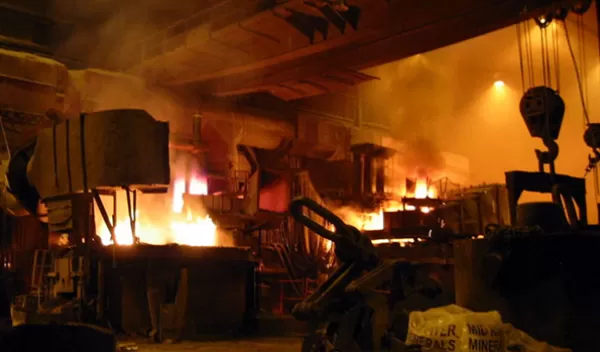
Geologists map how metal pollutants have traveled across the city of Pittsburgh
Pittsburgh's steel industry may be largely in the past, but its legacy lives on in city soils. New research shows that historical coking and smelting dropped toxic metals in Pittsburgh's soil, particularly in the eastern half of the city.
While the most severe levels of soil lead come from concentrated sources, those aren't the only factors that can make dirt harmful to garden or play in, especially in a city with an industrial history like Pittsburgh's.
With samples from 56 parks, cemeteries and other sites around the city, scientists pinpointed some of those polluting factors. The U.S. National Science Foundation-supported researchers published their results in the journal Environmental Research Communications.
"The gut reaction when you're thinking about urban metals is to think it's all gasoline lead or paint lead, and as long as you take care of those, you're in good shape," said co-author Daniel Bain of the University of Pittsburgh. "But we don't really have a good idea of other less common or more diffuse sources of lead."
Understanding those other sources requires looking beyond houses and roads to areas with relatively undisturbed soil. Only recently have the tools for testing soil samples become common enough for researchers to branch out from the most concentrated and worrisome sources of pollution.
Concentrations of soil metals were generally higher in the east end of the city, likely a result of wind patterns, and the city's geography also plays a role, the team found. Levels were higher in the two large, flat valleys that crisscross Pittsburgh: the historical paths of the Allegheny and Monongahela rivers.
These valleys still influence local weather patterns, serving as the sites of temperature inversions that trap pollution close to the ground. Along with worsening air pollution, the team theorizes, inversions may have given heavy metals from historical industrial sites a chance to settle from the air into the soil.
To pin the pollution to likely sources, the geologists measured the ratios of different pollutants, comparing them to the outputs of different industrial processes. That meant not just using statistics and mapping techniques but sorting and cross-referencing historical sources to locate past coking plants and smelters and determining what metals they released into the air.
"This study sheds light on the lingering effects of industries of the past on the environment," said Justin Lawrence, a program director in NSF's Division of Earth Sciences. "The information is helpful as contemporary industries strive to adopt more sustainable practices."


